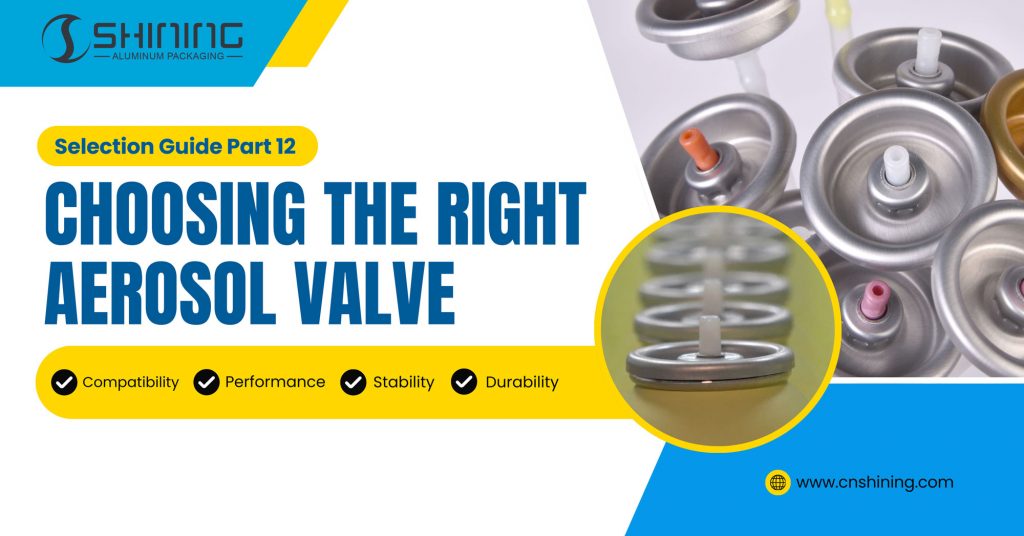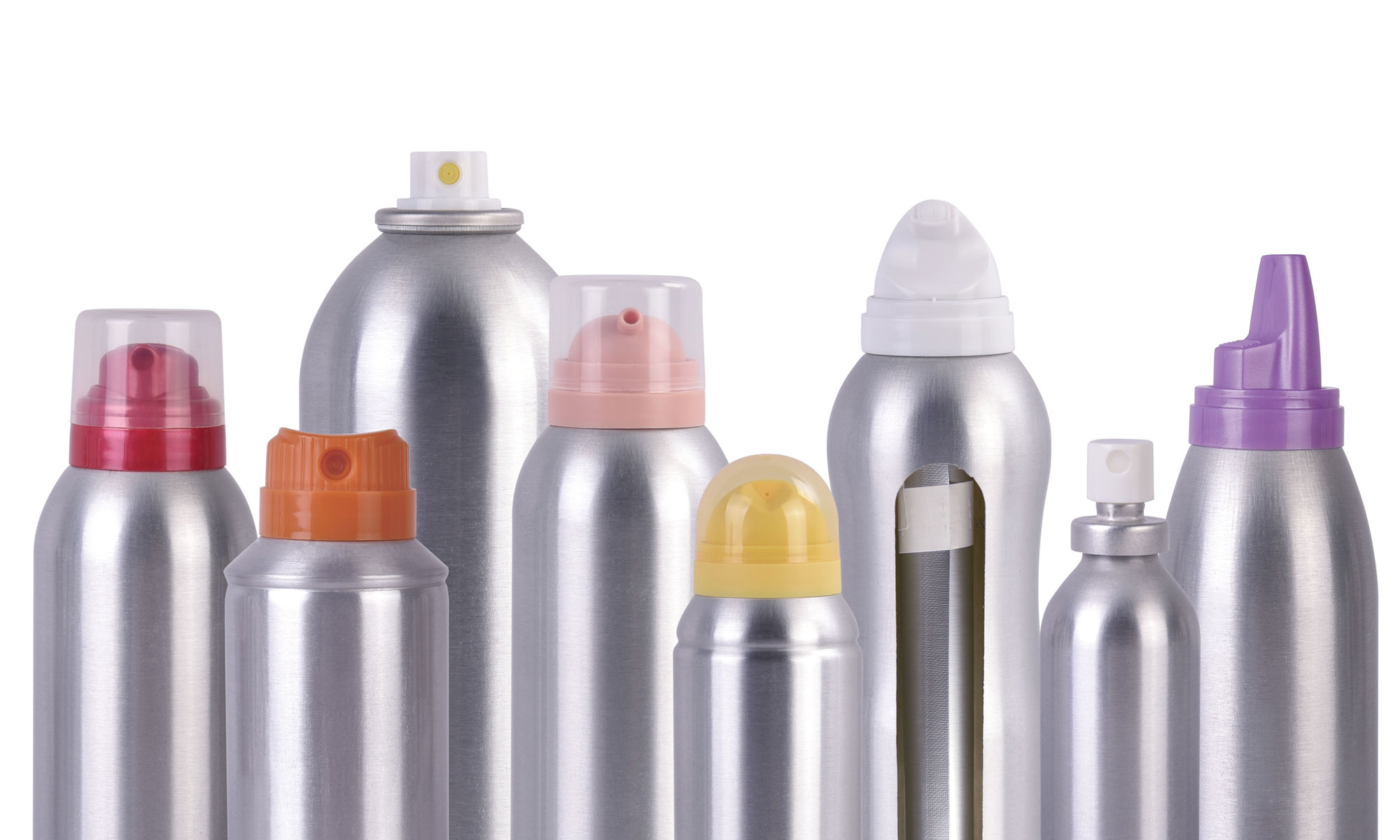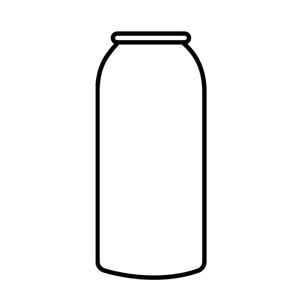Introduction
Lorsqu'il s'agit de choisir le bon valve d'aérosol Pour votre produit, il existe des facteurs critiques qui ont un impact direct sur la qualité, la fonctionnalité et la satisfaction client de votre produit final. Dans cet article, nous vous expliquerons les considérations clés lors du choix d'une valve d'aérosol, répondrons aux questions courantes et révélerons quelques informations moins connues pour des performances optimales et une durabilité à long terme.
Critères de sélection critiques pour les valves d'aérosol
Lors de la sélection d'une valve d'aérosol, les fabricants doivent prendre en compte divers facteurs pour s'assurer qu'elle correspond aux exigences de leur produit. Chaque type de valve offre différentes fonctionnalités adaptées à des applications spécifiques, des produits cosmétiques et de qualité alimentaire aux applications industrielles. Explorons ces critères en détail :
1. Viscosité du produit
La viscosité joue un rôle majeur dans le choix du type de valve à utiliser. Les produits à haute viscosité (comme les crèmes ou les gels) nécessitent des valves avec des orifices plus grands pour permettre une distribution en douceur. À l'inverse, les produits à faible viscosité (comme les sprays ou les brumes) bénéficient de tailles d'orifice plus petites pour une distribution contrôlée.
2. Modèle de pulvérisation et débit
Différents produits nécessitent différents types de pulvérisation et différents débits pour garantir la satisfaction de l'utilisateur et une application précise. Par exemple, une laque pour cheveux en aérosol doit offrir une fine brume pour une distribution uniforme, tandis qu'un lubrifiant industriel peut nécessiter un jet plus concentré. Le choix de la bonne conception d'actionneur, de boîtier et de vanne permet aux fabricants d'obtenir ces résultats spécifiques.
3. Compatibilité des propulseurs
Le type de gaz propulseur utilisé (gaz liquéfiés ou gaz comprimés) peut affecter le matériau et la fonctionnalité de la valve. Par exemple, le CO2 et l'azote sont des options populaires pour les aérosols de qualité alimentaire en raison de leur sécurité, tandis que les hydrocarbures peuvent convenir à d'autres utilisations industrielles. Il est essentiel de sélectionner une valve compatible avec votre gaz propulseur pour éviter les fuites et maintenir la cohérence des performances.
4. Réglementations environnementales et de sécurité
Les réglementations sur les valves d'aérosol varient selon les régions, avec des normes strictes pour assurer la sécurité environnementale et la protection des utilisateurs. Le respect des normes internationales, telles que l'EPA aux États-Unis ou les normes européennes REACH, est essentiel pour choisir une valve d'aérosol qui répond aux exigences légales.
5. Durabilité du matériau de la valve
La longévité d'une valve d'aérosol dépend fortement des matériaux qui la composent. Les valves en acier inoxydable ou en aluminium ont tendance à mieux résister à l'usure que leurs homologues en plastique. Les matériaux doivent être choisis en fonction des exigences du produit, du budget et de l'environnement d'utilisation prévu pour éviter tout dysfonctionnement du produit et garantir sa durabilité.
Test de compatibilité et de performance
Les tests sont une étape essentielle pour garantir que la valve d'aérosol que vous avez sélectionnée fonctionne de manière optimale dans diverses conditions. Voici quelques domaines clés à tester :
1. Test de compatibilité
Avant la production à grande échelle, il est essentiel de réaliser des tests de compatibilité avec la formulation du produit afin de vérifier les interactions entre les matériaux de la valve et le contenu du produit. Les réactions chimiques, le gonflement ou le rétrécissement des composants de la valve sont des problèmes courants qui peuvent survenir lors des tests.
2. Modèle de pulvérisation et uniformité du débit
La réalisation de tests contrôlés pour évaluer le type de pulvérisation, le débit et la consistance globale permet de vérifier l'adéquation de la vanne. Les fabricants peuvent ajuster les tailles d'orifice ou les types d'actionneurs selon les besoins en fonction des résultats des tests.
3. Tests de stress environnemental
Les vannes doivent être testées dans des conditions de température, d'humidité et de stockage variables pour confirmer qu'elles conservent leurs performances. Les tests de résistance permettent d'identifier les défaillances potentielles, garantissant que la vanne peut résister aux conditions réelles.
Évaluation de la stabilité et de la durabilité des valves d'aérosols
La fiabilité à long terme des valves d'aérosol est essentielle pour des performances durables et la satisfaction du client. Voici quelques conseils essentiels pour maintenir la stabilité et la durabilité :
1. Test de perte de poids
L'un des moyens les plus efficaces pour évaluer la durabilité des vannes consiste à effectuer des tests de perte de poids. Au fil du temps, la perte de produit due à une fuite ou à une évaporation progressive peut entraîner l'insatisfaction du client. Ce test consiste à mesurer le poids du produit sur des périodes prolongées pour surveiller la rétention.
2. Résistance à la corrosion
Dans les environnements à forte humidité, la corrosion peut affecter les performances des vannes. Les vannes en acier inoxydable et en aluminium offrent une meilleure résistance à la corrosion que le plastique, ce qui les rend idéales pour les produits susceptibles d'être stockés dans des conditions humides.
3. Intégrité du joint de soupape
Il est essentiel de maintenir l'intégrité des joints pour éviter les fuites. Les joints de la vanne, généralement en caoutchouc ou en élastomère, doivent être testés pour s'assurer qu'ils restent intacts sous des pressions et des températures variables. La vérification régulière de ces composants peut prolonger la durée de vie de la vanne.
Conseils d'experts et techniques moins connues pour la sélection des vannes
Bien que les critères et tests standards soient fondamentaux, voici quelques conseils d’experts qui passent souvent inaperçus :
- Testez avec des simulations du monde réel : Configurez des simulations avec des conditions réelles de stockage et d'utilisation du produit pour voir comment la vanne fonctionne au fil du temps.
- Tenez compte de l’expérience de l’utilisateur final : Pensez toujours du point de vue de l’utilisateur : un jet lisse et sans obstruction est essentiel à la satisfaction du client.
- Évaluer la recyclabilité : Envisagez des vannes avec des matériaux respectueux de l’environnement pour favoriser la recyclabilité, une demande croissante parmi les consommateurs soucieux de l’environnement.
FAQ : Choisir la valve d'aérosol adaptée à votre produit
- Quelle est la meilleure valve pour les produits à haute viscosité ? Les produits à haute viscosité bénéficient d'orifices plus grands pour assurer un écoulement fluide.
- Une valve peut-elle fonctionner pour différents propulseurs ? Certaines valves sont polyvalentes, mais les tests de compatibilité avec chaque propulseur sont essentiels.
- Comment tester la résistance aux fuites ? Effectuez des tests de compatibilité et de perte de poids pour identifier les fuites potentielles au fil du temps.
- Quel matériau est le plus durable pour les valves d’aérosol ? L’acier inoxydable et l’aluminium sont idéaux pour la durabilité, en particulier dans des conditions humides.
- Les valves d’aérosols sont-elles recyclables ? De nombreuses valves d’aérosols sont recyclables, selon les matériaux utilisés.
- À quelle fréquence dois-je tester les valves d’aérosol ? Des tests réguliers sur chaque lot de production garantissent qualité et cohérence.
- Quelle est l’importance des tests de jet de pulvérisation ? Les tests de modèle de pulvérisation garantissent une application optimale du produit et une expérience utilisateur optimale.
- Comment puis-je éviter la corrosion dans les valves d’aérosols ? Choisir l’acier inoxydable ou l’aluminium revêtu permet de prévenir la corrosion.
- Quel est le rôle du tube plongeur dans les performances de la valve ? Le tube plongeur aide à diriger le flux de produit, essentiel pour une distribution uniforme.
- Comment le type d’actionneur affecte-t-il la livraison du produit ? Différents actionneurs contrôlent la dispersion et le débit de pulvérisation, ce qui a un impact sur la précision de l'application.
Conclusion
Pour choisir la bonne valve d'aérosol, il faut comprendre les exigences du produit, effectuer des tests approfondis et privilégier la durabilité. En suivant ces directives, les fabricants peuvent prendre des décisions éclairées qui améliorent la qualité du produit et la satisfaction du client. Si vous souhaitez en savoir plus sur les valves d'aérosol ou si vous avez des besoins spécifiques, Nous contacter ou visitez notre usine.






















